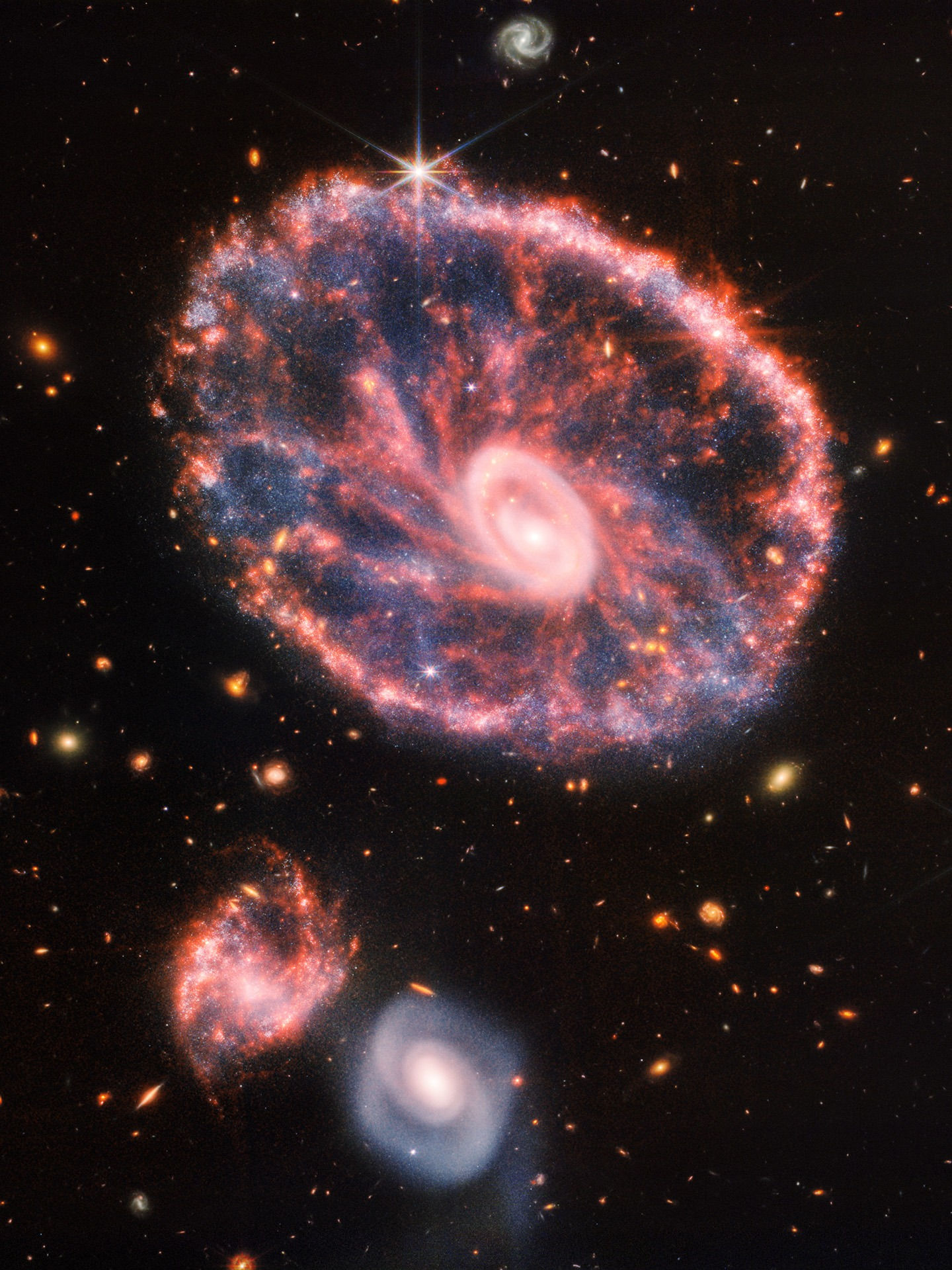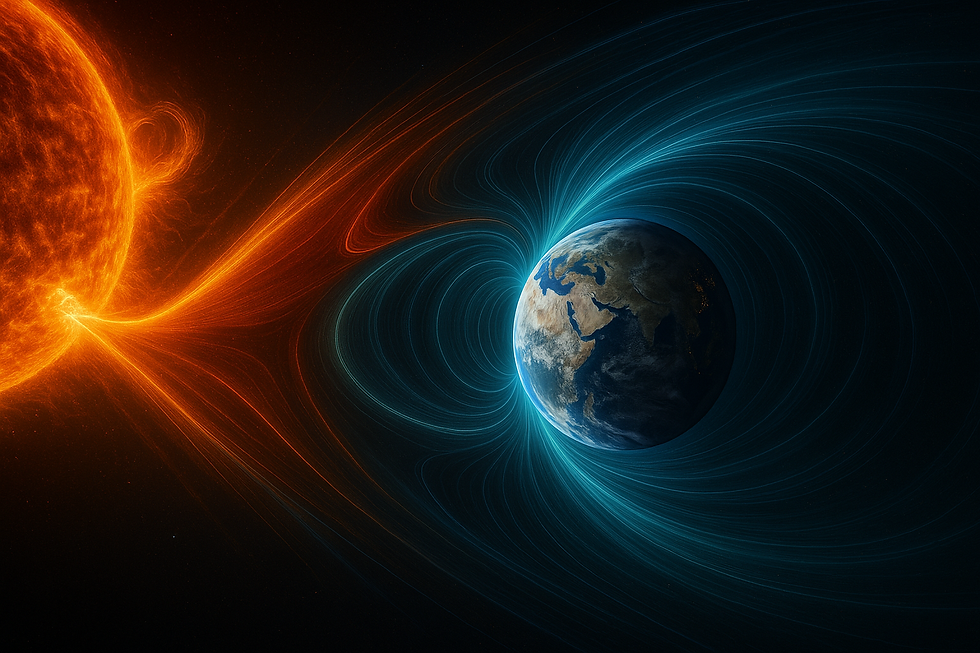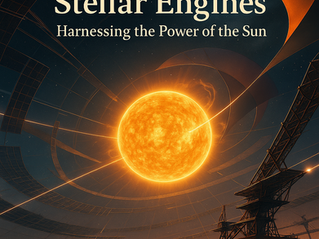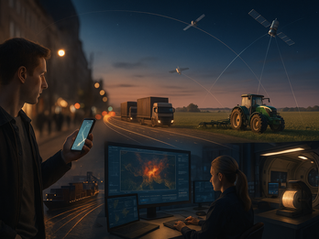Astronomy: Colonizing Mars Vs The Moon
- Mr_Solid.Liquid.Gas
- May 12
- 5 min read
Updated: Jul 22

As humanity looks to the stars, the idea of colonizing other planets is no longer the stuff of science fiction—it’s becoming a real possibility.
Two of the most discussed destinations for human colonization are Mars and the Moon.
Both worlds offer tantalizing opportunities for exploration and expansion beyond Earth, but they also present significant challenges that must be overcome.
In this article, we’ll explore the pros and cons of colonizing each world, comparing their environments, resources, and the technological hurdles that need to be addressed before humans can set up shop on either celestial body.
The Moon: Earth's Neighbour

The Moon is Earth's closest neighbor in space, just about 384,400 kilometers away.
While its proximity offers distinct advantages, it also presents challenges that must be addressed if we are to make a permanent presence there.
Advantages of Colonizing the Moon
Proximity to Earth
Shorter Travel Time:
The Moon is only a few days’ journey away from Earth, which makes it a more accessible target for human missions.
This could allow for faster resupply missions, evacuation in case of emergency, and easier transportation of equipment and people.
Resources and Energy
Regolith:
The Moon’s surface is rich in regolith, a layer of fine dust that could potentially be used to create construction materials, such as bricks or concrete, for building habitats or shelters.
This could reduce the need to transport building materials from Earth.
Water - Ice:
Water ice has been found at the Moon's poles, particularly in permanently shadowed craters.
This ice could be extracted and used for drinking water, oxygen, and even as a resource for creating hydrogen fuel.
Solar Power:
The Moon’s surface is a prime location for harvesting solar energy, as it is exposed to sunlight for about 14 Earth days at a time.
Solar panels could provide a constant and reliable source of power for lunar colonies.
Scientific Research
Observatories:
The far side of the Moon (which always faces away from Earth) is shielded from Earth's radio and light interference, making it an ideal location for radio telescopes and other astronomical observatories.
A lunar colony could provide scientists with an unobstructed view of deep space
Challenges of Colonizing the Moon
Lack of Atmosphere
The Moon has no atmosphere, which means there is no natural protection from the harsh radiation of the Sun and cosmic rays.
Colonists would need to build habitats with strong shielding, or even live underground, to stay safe from radiation exposure.
Additionally, the lack of an atmosphere means there is no breathable air, and temperatures fluctuate drastically between the daytime and nighttime.
During the lunar day, the temperature can reach around 127°C, while at night, it can plunge to-173°C.
This extreme temperature variation makes habitat design and human survival more difficult.
Low Gravity
The Moon’s gravity is only about 16.5% of Earth’s gravity, which could have significant long-term effects on the human body.
Prolonged exposure to low gravity can lead to muscle atrophy and bone density loss, which would require extensive countermeasures, such as exercise regimes and artificial gravity systems.
No Magnetic Field
Earth’s magnetic field helps protect us from harmful solar radiation.
The Moon lacks such a magnetic field, which means colonists would be exposed to much higher levels of radiation from the Sun.
This would be a significant challenge for long-term survival.
Mars: The Red Planet

Mars, located about 225 million kilometres away from Earth, is often considered the most
Earth-like planet in our solar system.
It’s been the subject of countless missions, both robotic and theoretical, due to its potential for human colonization.
Advantages of Colonizing Mars:
1. Atmosphere (Sort Of)
While the atmosphere on Mars is thin (about 1% the density of Earth’s atmosphere) and mostly made up of carbon dioxide, it offers some protection from cosmic radiation, unlike the Moon.
Mars also has a day-night cycle similar to Earth’s (about 24.6 hours), which would be beneficial for maintaining human circadian rhythms.
Oxygen Production:
Recent technological developments, like NASA's MOXIE
(Mars Oxygen In-Situ Resource Utilization Experiment), have shown that it may be possible to produce oxygen from the Martian atmosphere, which could be crucial for human colonization.
2. Water Resources
Mars is known to have vast amounts of water locked in its polar ice caps and possibly beneath its surface.
This water could be used for drinking, growing food, and even generating oxygen.
The presence of water is one of the most critical resources for a sustainable colony.
3. Long-Term Habitability
Mars has more favourable conditions for long-term colonization than the Moon, particularly in terms of gravity.
Mars has 38% of Earth’s gravity, which may help mitigate some of the health issues associated with prolonged low gravity exposure, like muscle atrophy and bone loss.
There is also more potential for terraforming Mars in the distant future, although it remains a speculative idea.
The ability to generate a breathable atmosphere (through large-scale greenhouse gas emissions) or build habitats with a self-contained ecosystem offers longer-term colonization prospects.
4. Scientific and Historical Value
Mars has long been a subject of scientific fascination.
Understanding its history could provide vital clues about the origins of life, as it is thought to have had conditions suitable for life in its distant past.
Studying Mars up close could revolutionize our understanding of planetary science and the potential for life beyond Earth.
Challenges of Colonizing Mars
1. Distance and Travel Time
The long journey to Mars—taking anywhere from 6 to 9 months—presents a major challenge.
The trip would require advanced life support systems to keep colonists alive for extended periods, as well as shielding from cosmic radiation and solar flares.
In addition, the vast distance makes resupply missions much more difficult than to the Moon.
Radiation:
Mars’ thin atmosphere and lack of a magnetic field mean that colonists would still be exposed to significant radiation. Without effective radiation shielding, long-term habitation could be dangerous for humans.
2. Lack of a Magnetic Field
Like the Moon, Mars lacks a global magnetic field, which provides only limited protection from radiation.
Colonists would need to live underground or in habitats with extensive radiation protection to survive long-term exposure to solar and cosmic radiation.
3. Extremely Harsh Environment
Mars is cold, with average temperatures around -60°C, and can drop much lower near the poles.
This presents a significant challenge for building habitats and maintaining human life.
Colonists would need to use advanced insulation and heating systems to stay alive.
Dust storms on Mars can cover large portions of the planet for weeks or even months, reducing visibility and potentially damaging equipment.
The dust is also highly abrasive, which poses a risk to both machinery and infrastructure.
4. Resource Extraction
While Mars has water and some resources, extracting them in sufficient quantities for a colony would require advanced technologies.
Extracting water from ice, producing oxygen from carbon dioxide, and mining local materials for construction would all be significant undertakings.
Conclusion: Mars or the Moon?
Both Mars and the Moon offer unique opportunities and challenges for colonization.
The Moon's proximity to Earth makes it a potentially ideal first step for space colonization, serving as a testing ground for technologies and strategies that could be applied to Mars or other destinations.
Its rich resources, including water ice and solar energy, make it a promising candidate for a long-term human presence.
Mars, however, offers a more Earth-like environment, with a day-night cycle and the potential for future habitability through terraforming.
It’s further from Earth, making travel and resupply more difficult, but its more substantial atmosphere and gravity make it a more viable option for long-term colonization.
The presence of water and the potential for resource utilization make it a compelling choice for those dreaming of building a new home on another planet.
Ultimately, the decision between colonizing Mars or the Moon depends on a variety of factors, from technological advancements to budget and mission goals.
The most likely scenario is that humanity will first establish a foothold on the Moon as a proving ground for technologies that will eventually enable the colonization of Mars—ushering in the next great chapter of space exploration












































































































Comments